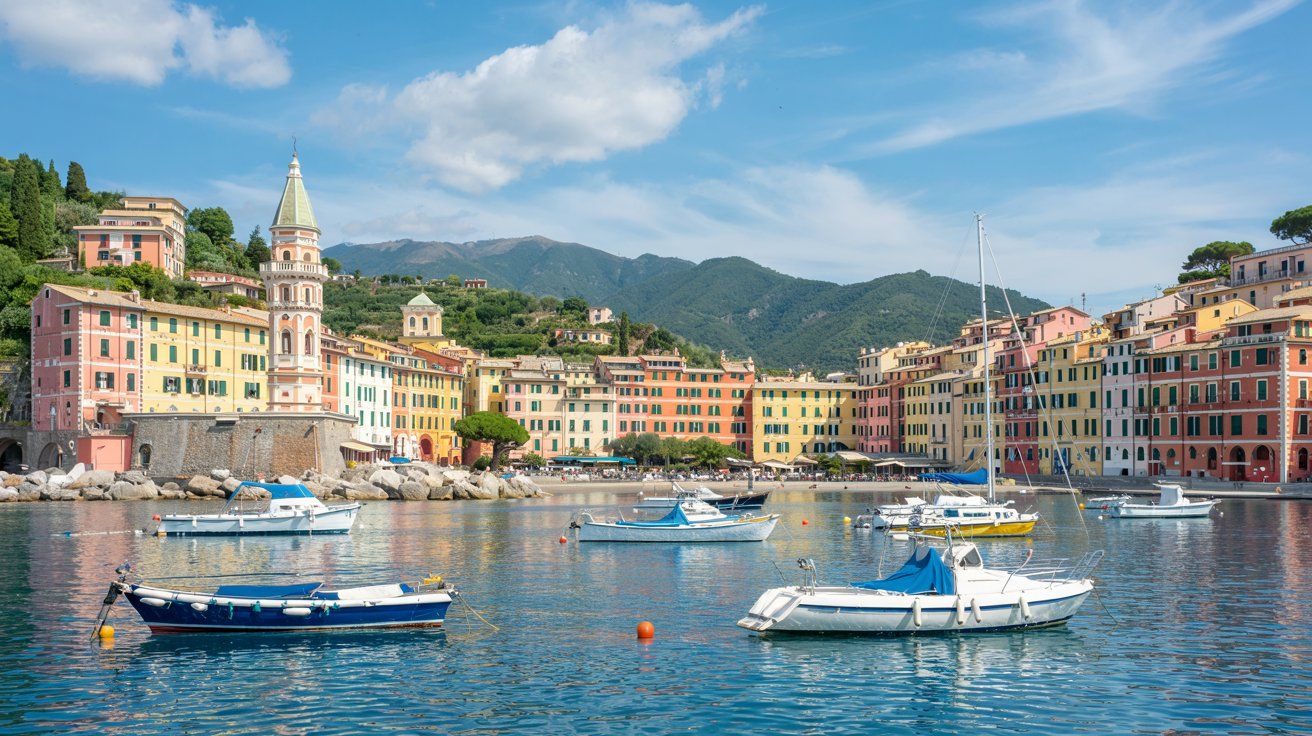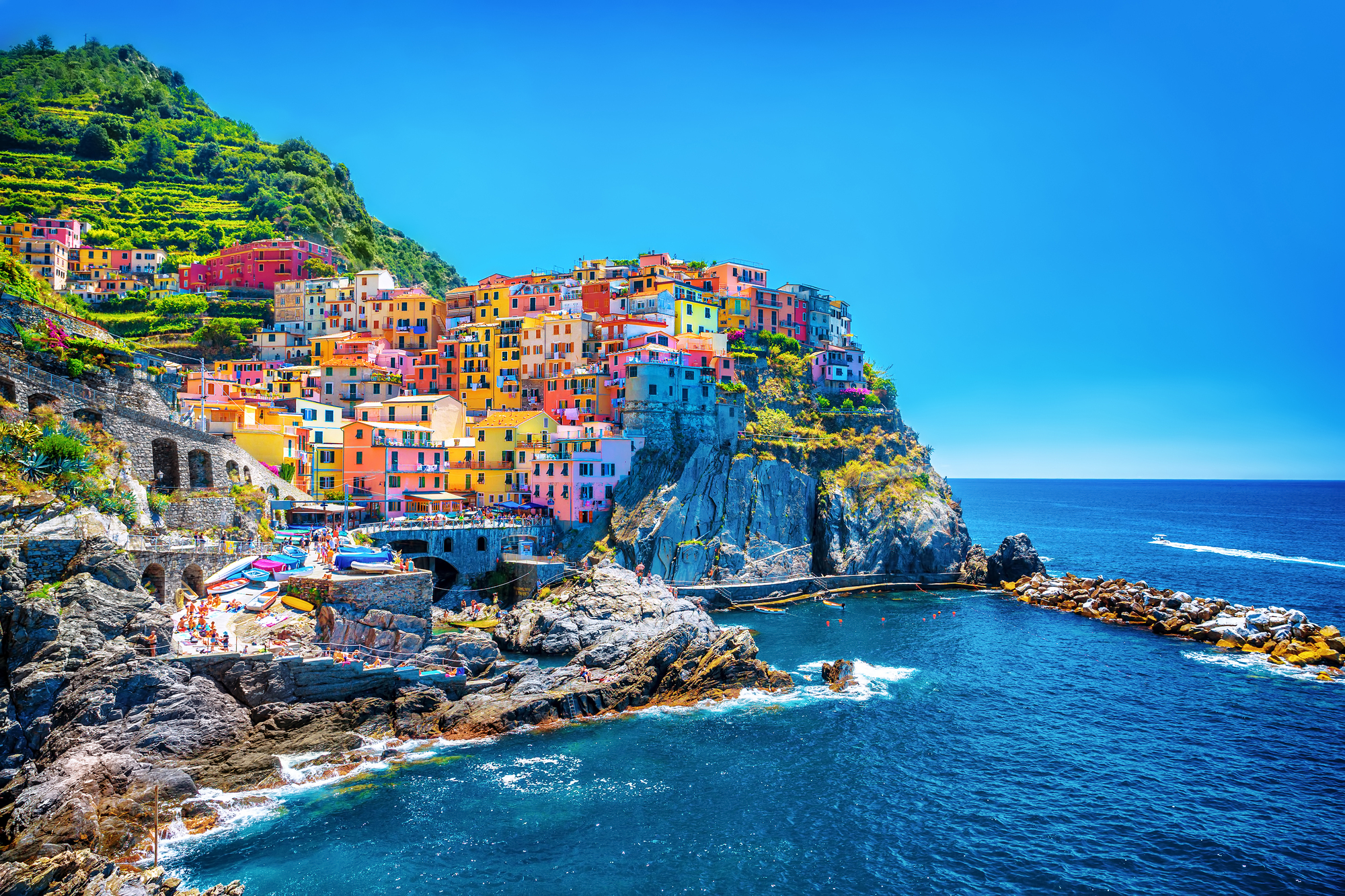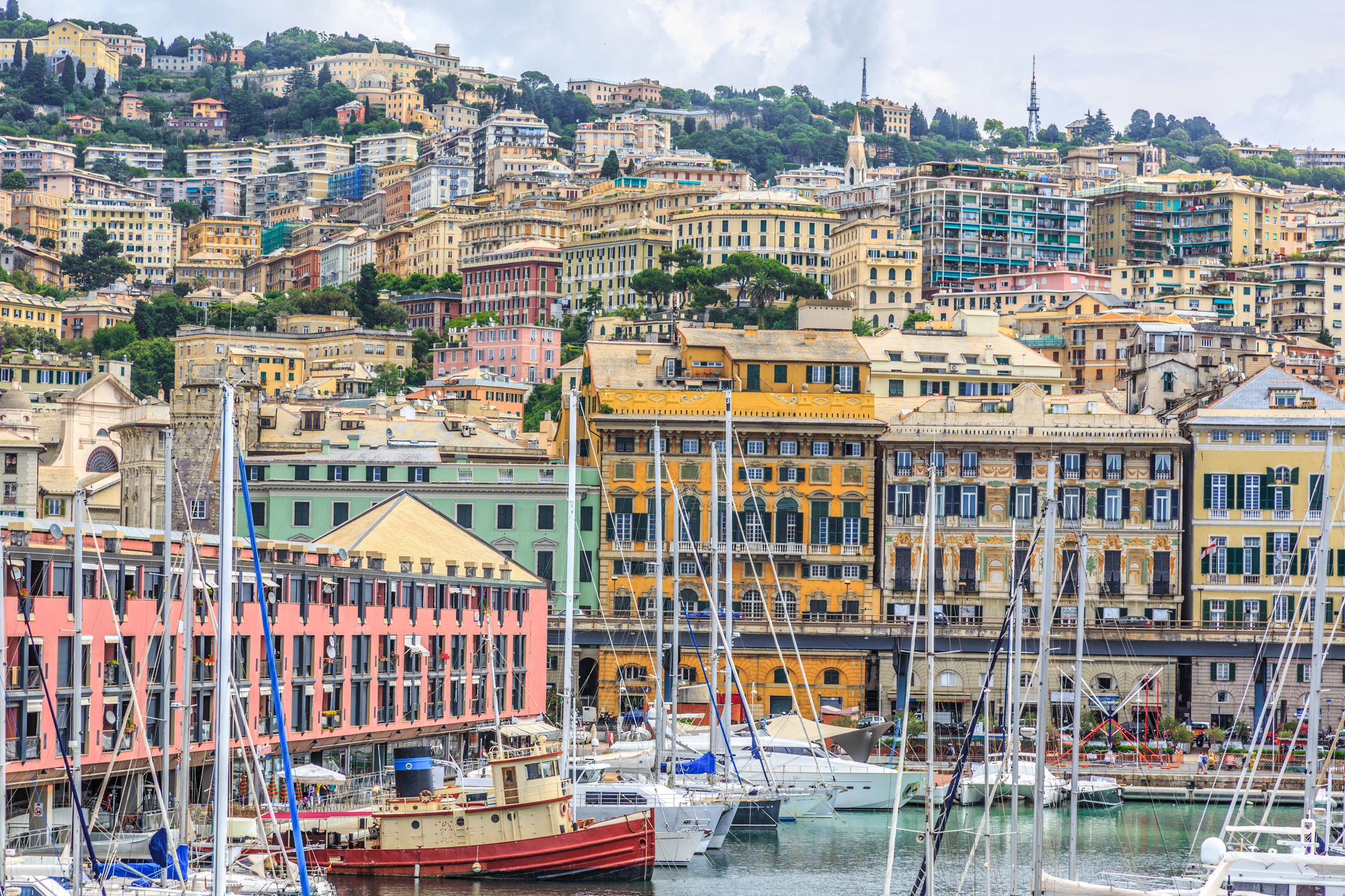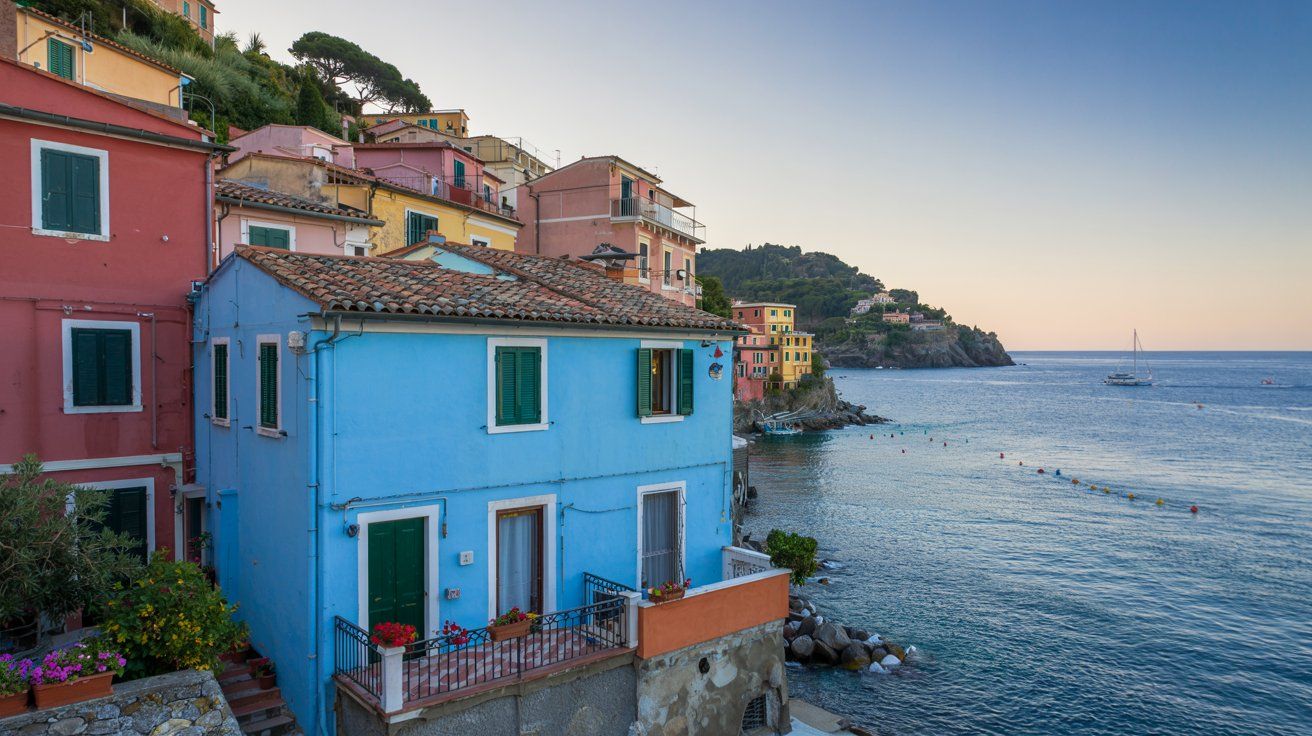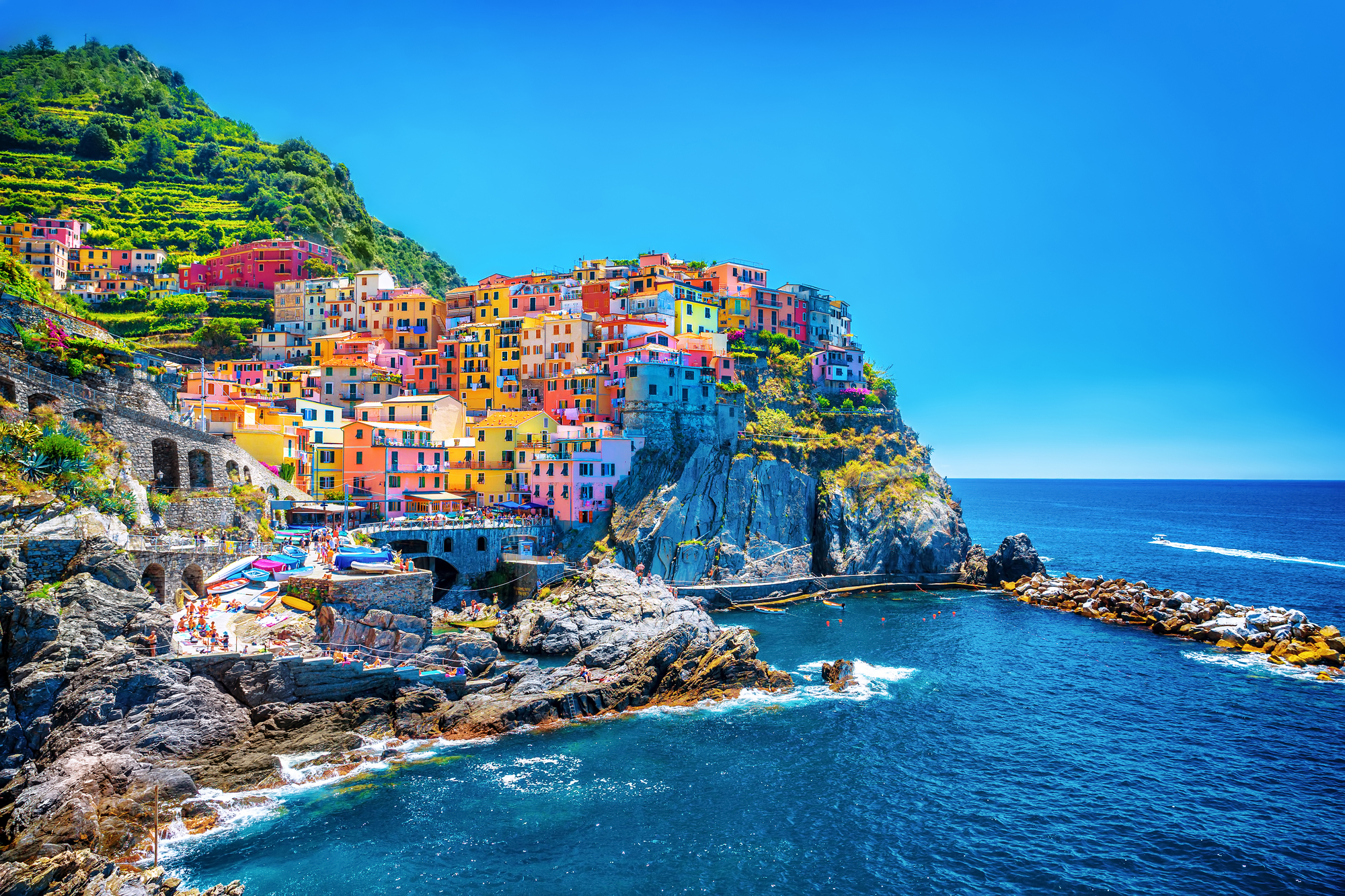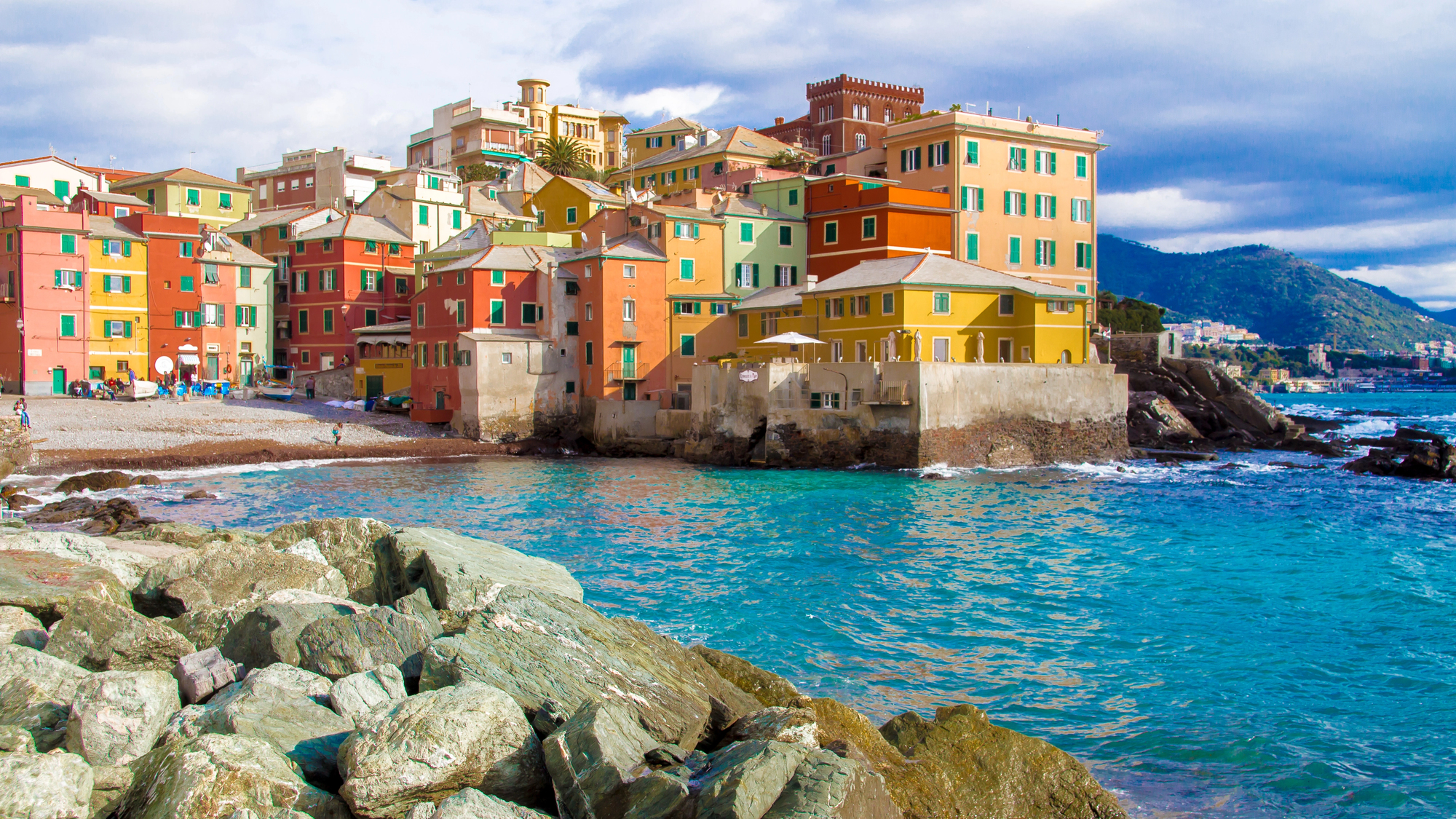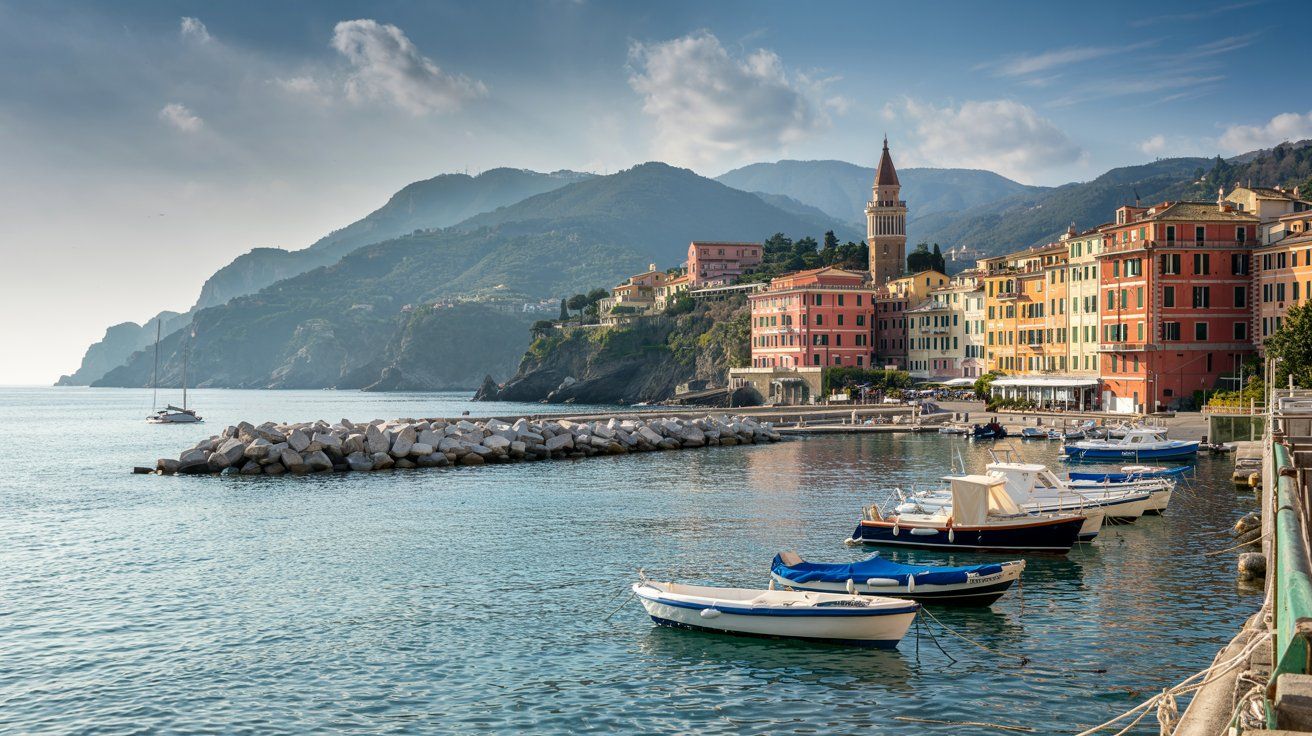Rising majestically to 1,640 meters (5,381 feet) in eastern Liguria, Monte Gottero stands as a captivating peak in the Italian Apennines. This mountain offers more than just stunning views – it provides a moderately challenging hiking experience that rewards visitors with a genuine connection to the Italian wilderness. The 6.8-mile loop trail from Passo Cappelletta takes about 4 hours to complete and showcases some of the most beautiful landscapes in this lesser-known region of Liguria.
At the summit, two mountain torrents merge beneath weathered pillars, creating a dramatic natural scene that photographers and nature lovers will appreciate. Monte Gottero’s prominence of 691 meters makes it a standout feature in the landscape and a perfect destination for those looking to escape the crowded coastal areas of Liguria. The well-marked T2 hiking trail leads you to the top where panoramic views stretch across the Mediterranean Sea.
Get a discount of 15% to 70% on accommodation in the Italian Riviera! Look for deals here:
Italian Riviera Hotels, Apartments, B&Bs
You’ll find Monte Gottero positioned perfectly for exploration – about 40 km southeast of Genoa and not far from popular destinations like Portofino and Cinque Terre. This location makes it an ideal day trip for travelers seeking to combine coastal charm with mountain adventure. The mountain’s unique position on the border of Liguria creates a fascinating mix of landscapes and cultural influences that you won’t find elsewhere.
History of Monte Gottero
Monte Gottero stands tall in Eastern Liguria, a mountain with deep historical roots. This peak, part of the Apennine mountain range, has been a silent witness to the shifting tides of Italian history for thousands of years.
The area around Monte Gottero shows signs of human activity dating back to prehistory. Early settlers were drawn to its strategic position between what would later become the regions of Emilia-Romagna and Tuscany.
During the time of the Etruscans, the mountain served as a natural boundary between different territories. Later, under the Roman Empire, the nearby Via Aemilia became an important route connecting the Po Valley to the coast.
After the fall of Rome, Monte Gottero and its surrounding lands changed hands many times. Charlemagne’s conquest brought the area under Frankish control during the 8th century.
In the Middle Ages, Monte Gottero marked an important border between various provinces. The mountain’s location made it significant for trade routes connecting the provinces of Parma and Piacenza with coastal Liguria.
Geologically, Monte Gottero is notable for its serpentinite formations. These distinctive green-black rocks have been used in local architecture for centuries, creating a unique regional building style.
Today, Monte Gottero stands as a natural monument to the rich tapestry of Italian history. Its slopes and valleys tell stories of ancient peoples, medieval conflicts, and the enduring relationship between humans and the land.
What to See in Monte Gottero
Monte Gottero stands tall in the Ligurian Apennines, offering breathtaking views that will leave you speechless. At 1,640 meters, this majestic peak serves as a natural boundary between Liguria, Emilia-Romagna, and Tuscany.
The mountain’s weathered pillars mark where two mountain torrents merge, creating a spectacular natural display. You’ll be captivated by these ancient rock formations that showcase the unique geology of the region.
Dense forests cover the slopes, with silver fir and oak trees dominating the landscape. These forests are part of the 6,900 hectares of woodland that make Liguria so special. The natural regeneration here creates a constantly evolving environment.
Wildlife enthusiasts will appreciate the rich biodiversity. Keep your eyes open for glimpses of wolves that have returned to these mountains in recent years. The diverse climatic conditions create habitats for numerous plant and animal species.
Follow the trails to discover the headwaters of the Vara River, which flows through valleys below. The river’s path has shaped the surrounding landscape over millennia.
Visit the quaint parish church in one of the nearby settlements. These historic buildings provide insights into local culture and traditions.
For hikers, Monte Gottero forms part of the Ligurian Mountains High Route, an ancient path stretching over 400 km from west to east. This trail offers the perfect balance of sea views and mountain peaks.
The unique geography makes Monte Gottero a fascinating destination in all seasons, though spring and fall offer the most comfortable temperatures for exploration.
How to Get to Monte Gottero
Monte Gottero, a magnificent mountain in Eastern Liguria, offers visitors incredible panoramic views and moderate hiking trails. Getting there requires some planning, but the journey is worth the effort.
You can reach Monte Gottero from anywhere in the world using various transportation options. The most convenient approach is to first travel to one of the nearby towns in the Val di Vara region, such as Varese Ligure.
If you’re coming by train, head to La Spezia or Sestri Levante stations, then transfer to a local bus service that connects to the smaller towns near the mountain.
Driving gives you the most flexibility. From La Spezia, follow signs toward Varese Ligure. Once in the area, you can park at Passo Cappelletta, which serves as a popular trailhead for the 6.8-mile loop trail up the mountain.
Important trail information:
- Average completion time: 4 hours 8 minutes
- Difficulty level: Moderately challenging
- Best parking: Colle Melosa area
The mountain is part of the impressive Ligurian Mountains High Route, which spans 44 stages across the entire region from Ventimiglia to Ceparana.
For the best experience, visit on clear days when visibility allows you to see all the way to the sea from the summit’s small open area. The rest of Monte Gottero is beautifully forested, making it a refreshing escape from coastal crowds.
Monte Gottero Visitor Information
Monte Gottero is a magnificent mountain peak in the Apennines of Eastern Liguria, standing at 1,640 meters (5,381 feet) above sea level. Located near the border with Tuscany, this natural wonder offers breathtaking panoramic views that attract nature enthusiasts from across Europe.
The best time to visit Monte Gottero is during late spring to early fall (May-October) when weather conditions are most favorable for hiking. Winter visits are possible but require proper equipment and experience due to potential snow and ice.
Getting There:
- From Genoa: Drive approximately 85 km east (about 1.5 hours)
- From La Spezia: Drive approximately 40 km north (about 1 hour)
- Public transportation is limited; renting a car is recommended
A well-marked hiking trail (rated T2 – mountain hiking) leads to the summit. The trail is moderately difficult and takes about 3-4 hours to complete one way, depending on your starting point and pace.
What to Bring:
- Sturdy hiking boots
- Weather-appropriate clothing (layers recommended)
- Plenty of water
- Snacks or packed lunch
- Camera for panoramic views
- Hiking poles (optional)
Nearby accommodations can be found in small towns surrounding the mountain. Many tourists use the coastal towns of Cinque Terre as a base, which are approximately 45-60 minutes away by car.
While not as famous as some other Ligurian destinations, Monte Gottero offers a more authentic experience away from large tourist crowds, making it perfect for those seeking a genuine connection with Italian natural landscapes.
Where to Stay Near Monte Gottero
When planning your visit to Monte Gottero in Eastern Liguria, you’ll find several charming options for accommodations in the surrounding area. The eastern part of Liguria offers a mix of coastal and inland lodging choices that serve as excellent base camps for exploring this mountainous region.
La Spezia makes an ideal starting point for your Monte Gottero adventure. This coastal city offers numerous hotels ranging from budget-friendly options to more luxurious stays. The NH Collection in La Spezia provides comfortable rooms with modern amenities.
For a more authentic experience, consider staying in one of the small villages nestled in the valleys around Monte Gottero. These quaint locations offer bed and breakfasts and small family-run hotels where you can experience true Italian Riviera hospitality.
If you prefer coastal accommodations, Sestri Levante offers converted townhouses and elegant hotels approximately 30 miles from Monte Gottero. This beautiful seaside town combines beach access with proximity to the mountains.
For travelers who want to stay in a larger city, Genoa lies about 60 miles west. The Hotel Bristol Palace and B&B Hotel Genova Principe offer comfortable stays in this historic port city. From Genoa, you can make day trips to Monte Gottero.
Budget travelers might consider:
- Small guesthouses in Varese Ligure
- Family-run agriturismi (farm stays) in the countryside
- Modest hotels in Sarzana
Remember to book accommodations in advance, especially during summer months when the Italian Riviera sees more visitors.
Things to Do Near Monte Gottero
Monte Gottero, a forested mountain in Eastern Liguria, offers visitors plenty of activities beyond its scenic peak. The surrounding area provides rich experiences for nature lovers and food enthusiasts alike.
Hiking Adventures
The trails around Monte Gottero are perfect for all skill levels. You can enjoy panoramic views of both the Ligurian coast and inland valleys as you trek through dense forests and open meadows. Pass Cappelletta serves as a popular gateway to the mountain.
Chestnut Forests Exploration
The region is famous for its ancient chestnut groves. In autumn, you can join locals gathering chestnuts, a traditional activity that has sustained the area for centuries. These majestic trees create stunning golden landscapes during fall.
Local Gastronomy
Eastern Liguria’s cuisine shines with chestnut-based dishes. You’ll find restaurants serving chestnut flour pasta, sweet desserts, and roasted chestnuts. Don’t miss trying local honey and mushroom specialties harvested from the surrounding forests.
Traditional Agriculture
Visit small farms that maintain century-old agricultural practices. Many local families still cultivate terraced gardens and produce olive oil, wine, and vegetables using traditional methods.
Hunting Traditions
The area has a rich hunting heritage, particularly for wild boar. While not for everyone, learning about these traditions provides insight into local culture and conservation practices.
Nearby Towns
Explore charming villages like Sarzanello with its impressive fortress, or visit Lusuolo for its historic architecture. These small settlements offer authentic glimpses of Ligurian mountain life away from tourist crowds.
Get a discount of 15% to 70% on accommodation in the Italian Riviera! Look for deals here:
Italian Riviera Hotels, Apartments, B&Bs


